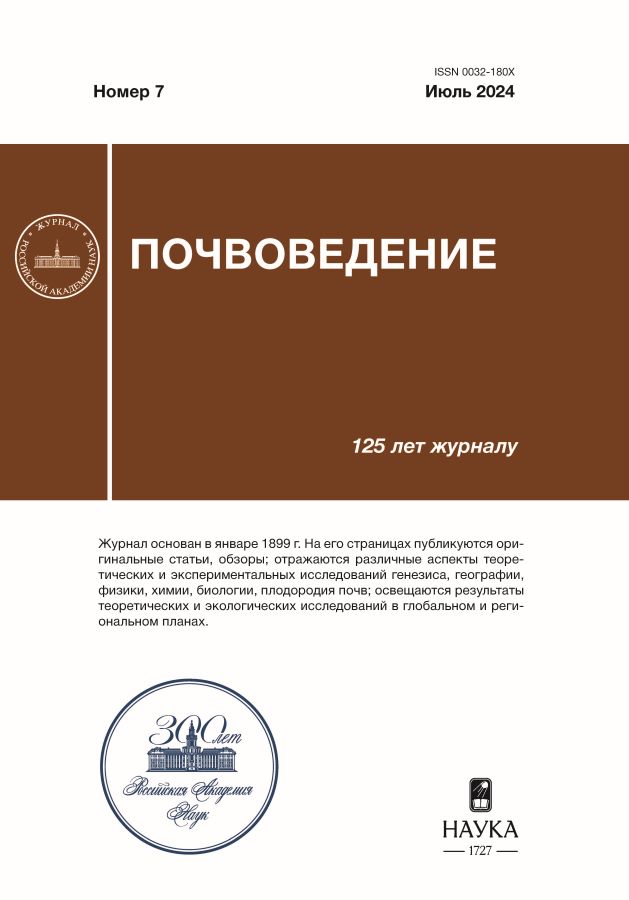Metrological Aspects of Studying the Granulometric Composition of Soil According to The Method of N.A. Kachinsky
- Autores: Vanchikova E.V.1, Lapteva E.M.1, Vasilyeva N.A.1, Kondratenok B.M.1, Shamrikova E.V.1
-
Afiliações:
- Institute of Biology of the Komi Scientific Center of the Ural Branch of the Russian Academy of Sciences
- Edição: Nº 7 (2024)
- Páginas: 997-1018
- Seção: SOIL PHYSICS
- URL: https://kld-journal.fedlab.ru/0032-180X/article/view/666620
- DOI: https://doi.org/10.31857/S0032180X24070062
- EDN: https://elibrary.ru/XUTGIG
- ID: 666620
Citar
Texto integral
Resumo
Based on a significant volume of soil samples of various genesis presented on the territory of the Komi Republic, a study of their granulometric composition (GC) was carried out in accordance with the Kachinsky method (MK). Calculated, procedural, random and systematic factors influencing the precision and correctness of measurement results performed in accordance with the MK prescription are considered. The influence of sample preparation (the degree of grinding of soil samples) and procedures for measuring the mass fraction of elementary soil particles (ESP) on the quality of the results of studying soil GS was assessed. The instability of measuring the mass fraction of fine sand (0.05–0.25 mm) and coarse dust (0.01–0.05 mm) fractions when using the MK recipe was shown. The dependence of the uncertainty of measurement results, caused by random factors, on the mass fraction of ECPs included in the granulometric fractions is noted – the lower the mass fraction of ECPs in the composition of the fractions, the higher the uncertainty of the measurement results. A modification of the Kaczynski method (MMK) has been developed to improve the quality of soil HS assessment results. It includes: (1) separation of fine sand particles using a sieve with a mesh diameter of 0.05 mm (instead of calculating this fraction by difference according to the MK recipe); (2) use of scales of the first class of accuracy to measure the mass fraction of dust and sludge particles; (3) control of the HS research process based on the summation of the measured values of the mass fraction of ESP of six fractions and acid-soluble compounds (losses from HCl treatment). The standard for operational control of the mass fraction of the amount of ECP after dividing them into fractions is (100 ± 5)%. A metrological study of the Kaczynski technique and its modifications was carried out. The proposed modification of Kaczynski’s technique made it possible to reduce the uncertainty in the measurement results of the mass fraction of ECP of small fractions (ωn < 10%) and shift the lower limit of measurements to 1%.
Texto integral
##article.viewOnOriginalSite##Sobre autores
E. Vanchikova
Institute of Biology of the Komi Scientific Center of the Ural Branch of the Russian Academy of Sciences
Autor responsável pela correspondência
Email: shamrik@ib.komisc.ru
Rússia, Syktyvkar
E. Lapteva
Institute of Biology of the Komi Scientific Center of the Ural Branch of the Russian Academy of Sciences
Email: shamrik@ib.komisc.ru
Rússia, Syktyvkar
N. Vasilyeva
Institute of Biology of the Komi Scientific Center of the Ural Branch of the Russian Academy of Sciences
Email: shamrik@ib.komisc.ru
Rússia, Syktyvkar
B. Kondratenok
Institute of Biology of the Komi Scientific Center of the Ural Branch of the Russian Academy of Sciences
Email: shamrik@ib.komisc.ru
Rússia, Syktyvkar
E. Shamrikova
Institute of Biology of the Komi Scientific Center of the Ural Branch of the Russian Academy of Sciences
Email: shamrik@ib.komisc.ru
Rússia, Syktyvkar
Bibliografia
Arquivos suplementares



















